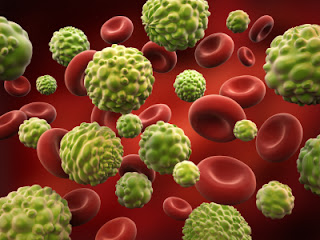Blood Cancer

what is Blood Cancer : Speaking broadly, blood cancer is a cancer that affects the largest connective tissue of the human body. Leukemia is the most common form of blood cancer. This form cancer or Leukemia affects the bone marrow of the body. The bone marrow is the body’s factory where production of red blood cells and white blood cells take place. Leukemia, once it affects the bone marrow, it tends to increase the production rate of white blood cells. There are mainly two forms of leukemia, namely, acute and chronic leukemia. Acute leukemia increases the density of the bone marrow. This prevents the bone marrow from producing healthy blood cells. This type of leukemia is common in children and in young adults. In pediatric cases, this type of cancer is mostly fatal, and should be treated immediately. If left untreated, the malignancy will spread to the other parts of the body and will surely prove to be fatal at a later stage of the disease. Chronic leukemia takes



